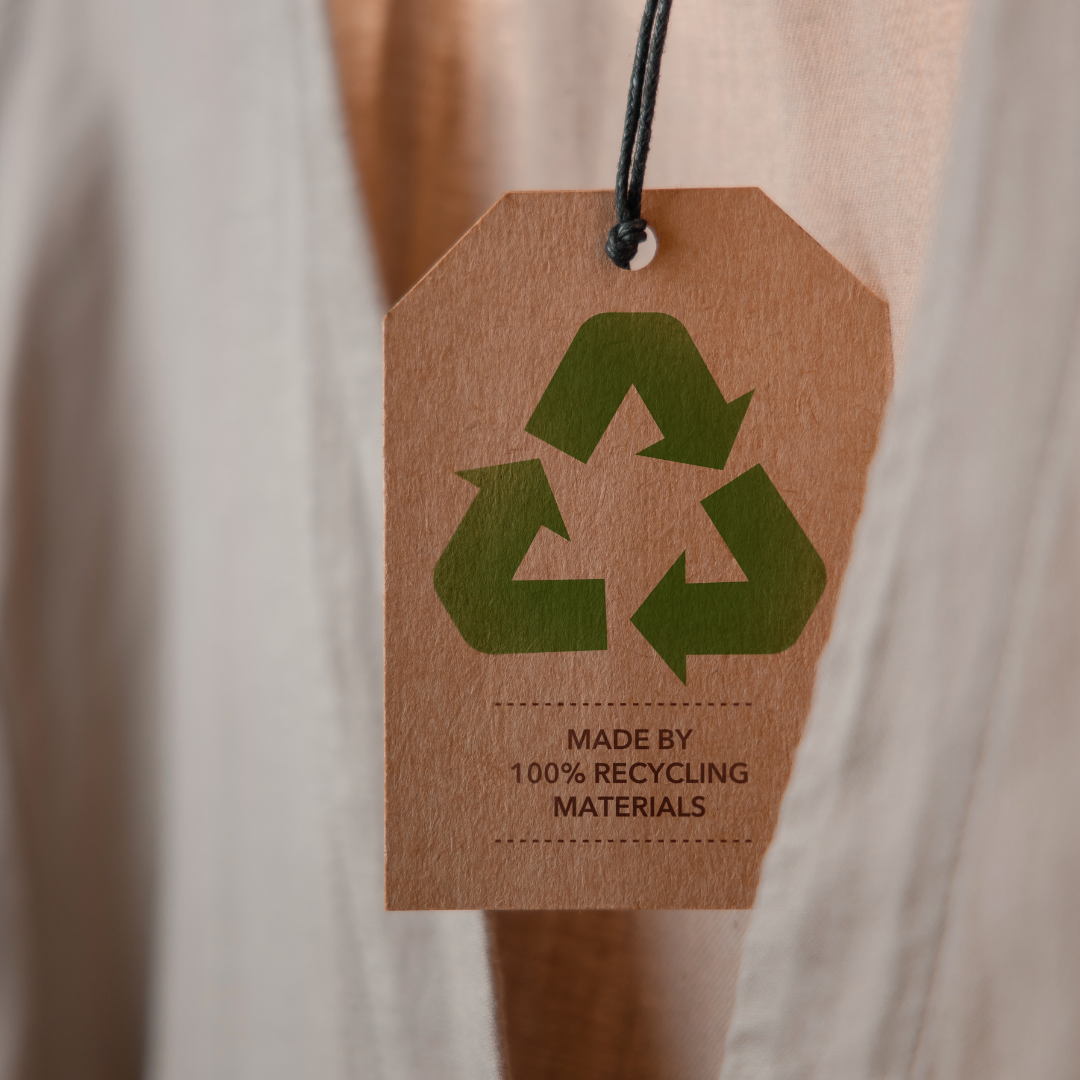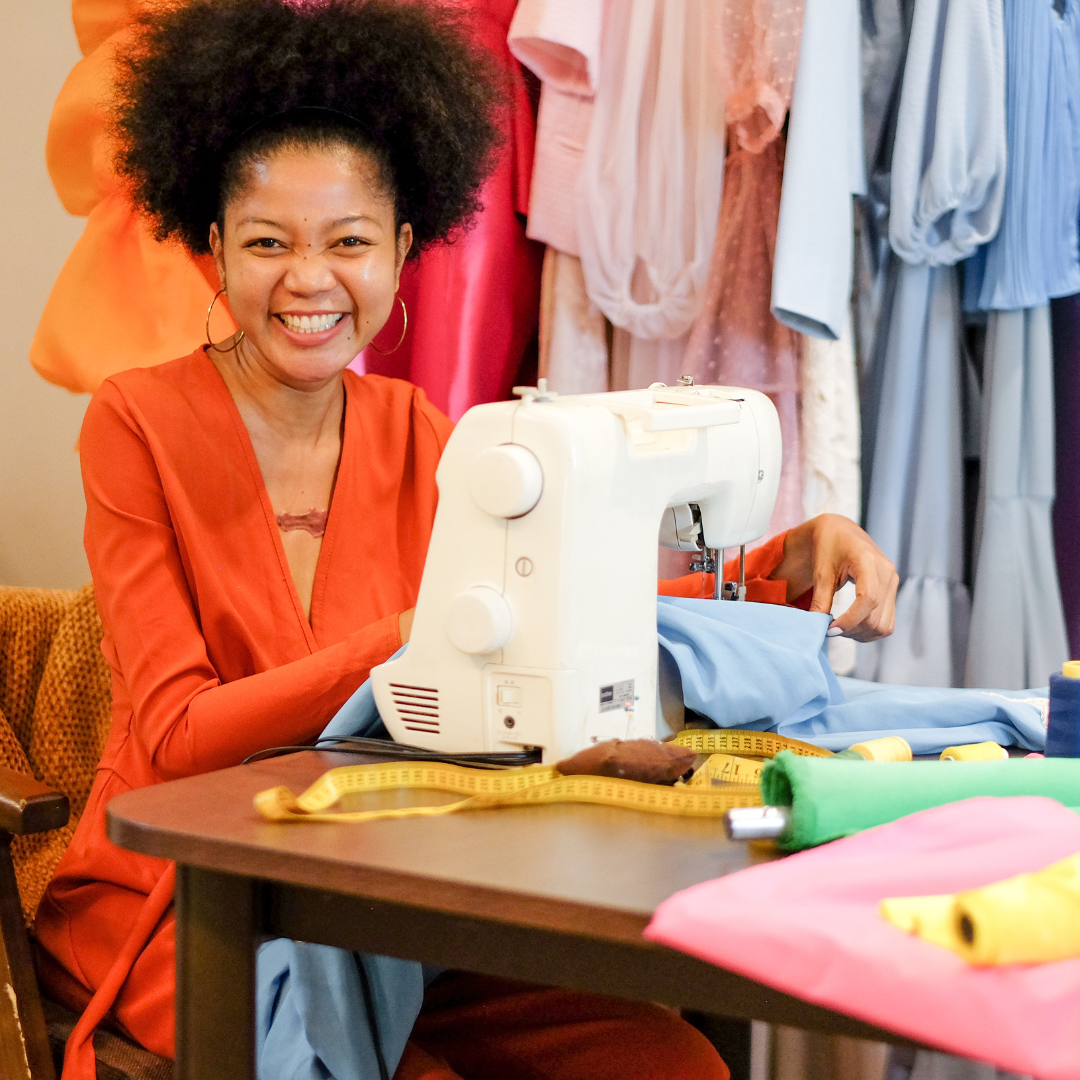Hey there, fashion-forward friends!
Let’s delve into a trend that’s not only chic but also environmentally conscious: sustainable fashion. That’s right—gone are the days of compromising style for sustainability. Today, it’s all about flaunting your outfit while leaving a positive mark on the planet.
So, what exactly defines sustainable fashion? It’s clothing that’s gentle on the Earth, from the materials used in its creation to the way it’s manufactured and even how it’s disposed of when you’re finished wearing it.
Eco-Friendly Fabrics
 When it comes to fabrics, the traditional fashion industry has often leaned heavily on materials like polyester and conventional cotton, inadvertently leaving a significant environmental footprint in its wake. However, there’s a silver lining on the horizon! Sustainable fashion brands are spearheading a revolution with a diverse range of eco-friendly alternatives that are as stylish as they are planet-friendly.
When it comes to fabrics, the traditional fashion industry has often leaned heavily on materials like polyester and conventional cotton, inadvertently leaving a significant environmental footprint in its wake. However, there’s a silver lining on the horizon! Sustainable fashion brands are spearheading a revolution with a diverse range of eco-friendly alternatives that are as stylish as they are planet-friendly.
Organic cotton stands at the forefront of this movement, offering a sustainable alternative to its conventional counterpart. Grown without the use of synthetic pesticides or fertilizers, organic cotton reduces the harmful impact of chemical runoff on soil and water systems, fostering healthier ecosystems.
But the innovation doesn’t stop there. Enter bamboo, a fast-growing, renewable resource that’s making waves in the sustainable fashion scene. Known for its softness and breathability, bamboo fabric boasts impressive sustainability credentials, requiring minimal water and land to cultivate compared to traditional cotton.
Hemp, too, deserves a moment in the spotlight. With its robust fibers and natural resistance to pests, hemp is a versatile material that requires little to no pesticides or herbicides during cultivation. Plus, it’s biodegradable, meaning it won’t clog up landfills once its lifecycle is complete.
And let’s not forget about recycled polyester, a true game-changer in the quest for sustainability. Crafted from discarded plastic bottles and other post-consumer waste, recycled polyester not only diverts plastic from landfills and oceans but also consumes less energy and water in its production compared to virgin polyester.
These planet-friendly fabrics not only slash the demand for harmful pesticides and chemicals but also frequently boast a smaller carbon footprint, making them a win-win for both fashion-conscious consumers and the environment alike. So, the next time you’re on the hunt for that perfect outfit, why not explore the world of eco-friendly fabrics? You’ll not only look good but feel good about your choice too!
Ethical Production
 Now, let’s take a deeper dive into the production process. Sustainable fashion isn’t solely about the end product; it’s about the entire journey from seed to garment. This encompasses a commitment to fair wages, safe working conditions, and a profound respect for the artisans and workers who breathe life into your clothes.
Now, let’s take a deeper dive into the production process. Sustainable fashion isn’t solely about the end product; it’s about the entire journey from seed to garment. This encompasses a commitment to fair wages, safe working conditions, and a profound respect for the artisans and workers who breathe life into your clothes.
At the heart of ethical production lies the principle of fair labor practices. This means ensuring that garment workers receive fair wages that allow them to support themselves and their families, without being subjected to exploitation or unfair labor practices. Additionally, it involves providing safe and healthy working conditions, free from hazards and risks to workers’ health and well-being.
But ethical production goes beyond just ensuring the welfare of workers—it also encompasses fostering a sense of dignity and empowerment among those involved in the production process. This means honoring the skills and craftsmanship of artisans and workers, valuing their contributions, and providing opportunities for growth and development within the industry.
Many sustainable fashion brands recognize the importance of transparency in the production process. They invite consumers to peek behind the scenes, offering insights into exactly where and how their favorite pieces are crafted. Whether it’s through detailed supply chain disclosures, factory tours, or certifications attesting to ethical practices, these brands empower consumers to make informed choices about the clothes they wear.
Moreover, sustainable fashion brands often prioritize local production and craftsmanship, supporting artisanal communities and preserving traditional skills and techniques. By sourcing materials locally and partnering with artisans and cooperatives, these brands not only reduce their carbon footprint but also contribute to the economic empowerment of local communities.
In addition to supporting local artisans, many sustainable fashion brands also collaborate with ethical factories abroad. These factories adhere to strict labor standards, ensuring that workers are treated with dignity and respect, and that environmental impact is minimized throughout the production process.
By championing ethical production practices, sustainable fashion brands demonstrate that fashion can be both stylish and socially responsible. They prove that it’s possible to create beautiful, high-quality clothing while upholding the rights and dignity of workers and minimizing environmental impact.
So, the next time you’re shopping for clothes, consider supporting brands that prioritize ethical production. Your choices have the power to make a positive difference in the lives of workers and communities around the world.
Circular Fashion

But what happens when your garments have served their purpose and are ready to retire from your wardrobe? Enter the fascinating realm of circular fashion, where sustainability meets innovation to revolutionize the way we view and interact with our clothing.
Unlike the traditional linear model of fashion consumption, where garments are produced, worn, and then discarded, often ending up in landfills, circular fashion is all about closing the loop and minimizing waste.
At its core, circular fashion embraces the principles of reduce, reuse, and recycle. It’s about designing clothing with the end in mind, ensuring that materials can be easily disassembled and repurposed at the end of their lifecycle.
One of the pillars of circular fashion is recycling. Instead of discarding old clothes, they can be transformed into new materials, ready to be woven into fresh garments. Whether it’s breaking down old denim jeans to create new yarn or shredding cotton T-shirts to make recycled fabric, recycling breathes new life into old textiles, diverting them from landfills and reducing the need for virgin materials.
But recycling is just one piece of the circular fashion puzzle. Upcycling offers another creative solution for giving clothes a second lease on life. Instead of breaking down materials to their raw form, upcycling involves repurposing old garments into new and exciting creations. Think turning vintage scarves into statement tops or transforming worn-out jeans into trendy patchwork skirts. With a dash of creativity and ingenuity, the possibilities are endless.
And let’s not forget about biodegradability. In the quest for sustainability, some fashion brands are exploring materials that are not only recyclable but also biodegradable, meaning they can break down naturally at the end of their lifecycle, returning to the earth without leaving behind harmful residues.
Circular fashion also extends beyond individual garments to encompass entire systems and business models. From clothing rental services that allow you to borrow and return outfits instead of buying them outright to take-back programs that encourage consumers to return old clothes for recycling or upcycling, innovative approaches are emerging to reshape the way we consume fashion.
Ultimately, circular fashion represents a paradigm shift in the fashion industry, where waste is minimized, resources are conserved, and creativity flourishes. By embracing circularity, we can create a more sustainable and resilient fashion ecosystem that benefits both people and the planet.
So, the next time you bid farewell to a beloved garment, consider its potential for a second life in the circular fashion loop. Whether it’s through recycling, upcycling, or biodegradability, every small step towards circularity brings us closer to a more sustainable future.

 Are you ready to hop aboard the sustainable fashion train and make a positive impact on the planet? It’s time to embrace eco-conscious choices without compromising on style. Fortunately, navigating the world of sustainable fashion has never been simpler.
Are you ready to hop aboard the sustainable fashion train and make a positive impact on the planet? It’s time to embrace eco-conscious choices without compromising on style. Fortunately, navigating the world of sustainable fashion has never been simpler.

